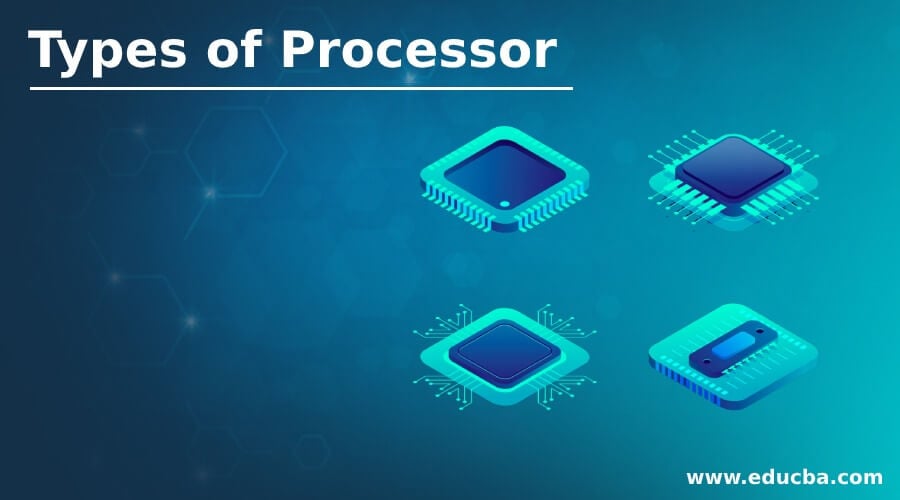Updated June 30, 2023

Introduction to Processor
The following article provides an outline for Types of Processors. The processor is a logic circuit or simple chip that reacts to fundamental instructions and input processes to operate the computer. The important purposes of a processor are getting, decoding, processing, executing, and writing back as feedback to the instructions of the chip. The processor is termed the brain of any electronic system that incorporates into a laptop, computer, smartphone, or embedded system. The control and arithmetic logic units are the processors’ two significant components.
The logic functions can be addition, multiplication, subtraction, and division, whereas the control unit manages the traffic flow, which follows the operation or command according to the input instruction.
Different Types of Processor
The control unit activates, fetches, and executes the input instructions. The processor can be embedded in a microprocessor and comprise of unit IC chip. But some devices are based on multi-core processors. It comprises one or more CPUs. It is a typical tiny component with pins that are embedded in the motherboard. It can also be connected to the motherboard using a fan and heat sink, which helps dissipate the heat generated by the component.
1. Microprocessor
The microprocessor is a standard processor which comprises an ALU, a control unit, and a club of registers known as control registers, status registers, and scratchpad registers. It can be on-chip memory, and a few interfaces can interact with the outer world via interrupting lines, and the others can be ports and memory registers to interact with the external world. These ports are often termed as programmable and make them act as output or input.
The processors share the input and output operations and memory. The processor mutually shares the working and access and their input and output functions to perform the same function.
2. Microcontroller
The microcontroller is standard and is available in different sizes and packages. A few of the microcontrollers are Microchip P1C16F877A, Microchip Atmega328, Microchip P1C18F45K22, Microchip P1C16F671, and Microchip P1C16F1503.
3. Embedded Processor
The embedded processor is structured to control the electrical and mechanical functions. It comprises numerous blocks like timer, program memory, data memory, reset, power supply, data memory, interrupt controller, clock oscillator systems, interfacing circuits, specific circuits, and system application ports and circuits.
4. Digital Signal Processor
The digital signal processor filters, measures, and compresses analog and digital signals. The processing of signals means the manipulation and analysis of digital signals.
Components of Processor
- The fundamental parts of the processor are control units, arithmetic logic units, registers, floating points, and L1 and L2 cache memory.
- The L2 and L1 cache memory saves the time for the CPU to fetch the data from RAM.
- The primary functions are fetching, decoding, writing back, and executing. The fetch is the function which gets the instruction from memory and feeds it to RAM.
- In the execution process, the CPU must trigger and carry out the functions.
- Suppose it obeys four sets of commands; then it’s called as quad-core processor. If there are more cores, the computer can obey multiple commands simultaneously.
Conclusion – Types of Processor
Few processors are multi-threading that use the core of the virtualized processor. It can add unnecessary vCPU to affect the consolidated ratio, which can be built from four-six built-in physical cores.
Recommended Articles
This is a guide to Types of Processors. Here we discuss the introduction to Processors along with different types and respective components. You may also have a look at the following articles to learn more –

